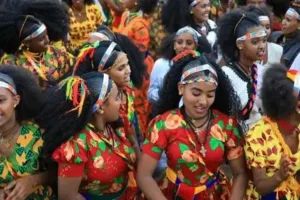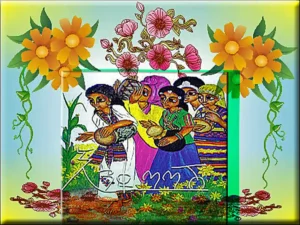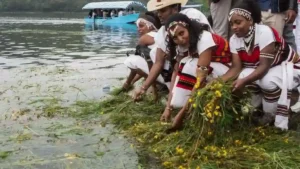What if we told you that you are currently in 2017 and not 2024? Sure, you’d be excited because that scrapes at least 7 years off your life.
Ethiopia is celebrating its New Year, as the country has just entered into 2017, in its calendar. The country has never been colonised and it has been independent for over 2,000 years. It has a lot of unique practices that have not been influenced on external level yet.
As, Ethiopia was not colonised by the rest of the world, so it still maintains most of its culture and traditions, even now.

Well, it’s New Year in the African country, and they celebrate it according to ‘Enkutatash’, which is based on the Ethiopian Orthodox calendar. The calendar is derived from the ancient Coptic and Julian calendars.
The Ethiopian calendar has 12 months with an additional 13th month in leap years and New Year falls on Meskerem 1, which arrives around September 11 or 12 on the Gregorian calendar.
New Year in Ethiopia
Enkutatash, the Ethiopian New Year, is an elaborate cultural event that signifies the nation’s rich history. It was not colonised by the rest of the world, so it still maintains most of its culture and traditions.
Moreover, the Ethiopian calendar is closely linked with the Ethiopian Orthodox Church.

Calendar of Ethiopia
The Ethiopian calendar is originally derived from the ancient Coptic and Julian calendars. The main difference between the Ethiopian and Gregorian calendars (that we use currently) is the calculation of Jesus Christ’s birth year.
Notably, Gregorian calendar and the Ethiopian Orthodox calendar have different dates for the birth of Christ.
The Gregorian calendar calculates it between 1 B.C. and 1 A.D., while the Ethiopian Orthodox calendar sets it seven to eight years later. This difference in dates is the main reason why the years don’t match between the two calendars.
Ethiopian calendar is a solar calendar with 12 months (30 days each) plus an additional 13th month (Pagumē) with five or six days in leap years. It also has 365 days in a month.

However, it’s New Year, and Enkutatash is on Meskerem 1. This is usually around September 11 or 12 on the Gregorian calendar.
The date coincides with the end of Ethiopia’s rainy season… it is a great time when flowers start to grow again and it is always a celebratory occasion.
Difference in Calendars
Difference between how Ethiopia calculates dates and months and the rest of the world is that Ethiopia calculates time much differently than the rest of the world. The day begins at 6:00 AM and not midnight at 12:00 AM.
Also, the day is divided into two 12-hour parts, starting at 6:00 AM and ending at 6:00 PM.
Surprisingly, Ethiopian calendar months have unique names, beginning with Meskerem (known as September or October) and ending with Nehasse (known as August). Pagumē, the additional 13th month, serves as a brief transition between the old and new years.

Even they celebrate their festivals on different time, the Ethiopian Christmas is called Genna and it happens on January 7.
Strange, right! Same world but still different. Well there are still so many things in the world that are still needed to be discovered.

New Year Celebrations
Famous African artist Davido performed recently during the great fair organized to celebrate Ethiopia’s new year. The celebrations included traditional music, dance and cultural performances.

